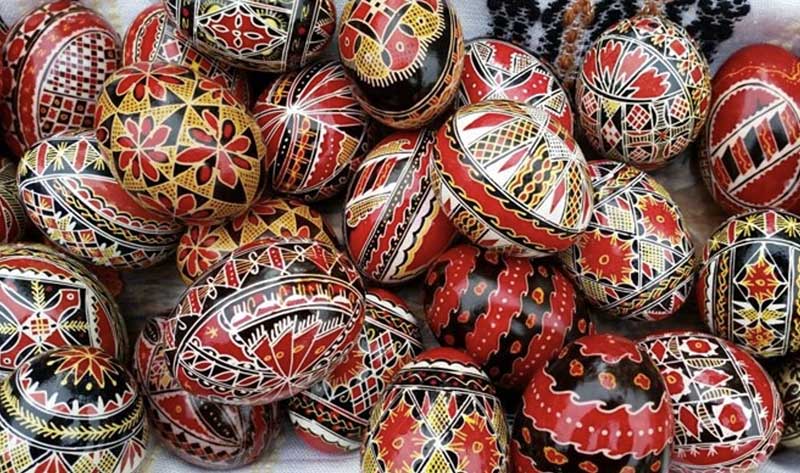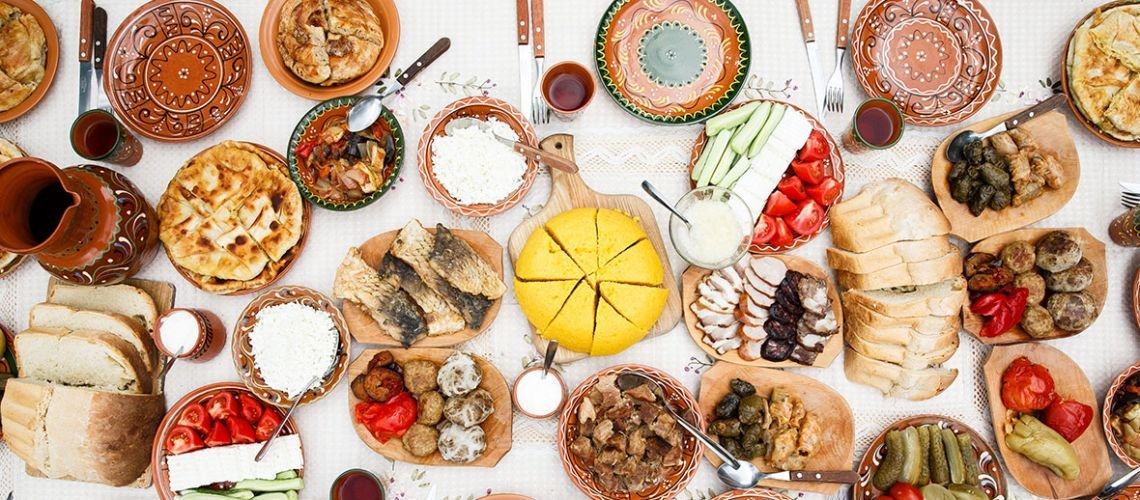Easter is a significant holiday in Romania, celebrated with various traditions and culinary delights. The preparation of Easter food in Romania is a time-honored practice that brings families together and marks the joyous occasion of Christ’s resurrection. Here’s an overview of the traditional Easter food preparation in Romania:
- Painting Easter Eggs (ouă încondeiate): One of the most cherished Easter traditions in Romania is painting eggs, which symbolize new life and rebirth. Eggs are often dyed using natural ingredients such as onion skins, beets, and spinach to create vibrant colors and intricate designs. The process of painting Easter eggs is a family affair, with everyone joining in to create beautiful decorations.
- Preparing Pasca (Pasca): Pasca is a traditional Romanian Easter bread that symbolizes the body of Christ. It is a sweet bread made from enriched dough, often flavored with lemon zest, vanilla, or rum, and filled with a sweet cheese mixture made from cottage cheese, eggs, sugar, and raisins. Pasca is typically baked in round or rectangular shapes and adorned with crosses or decorative motifs.
- Baking Cozonac (Cozonac): Cozonac is another traditional Easter bread enjoyed in Romania. It is a rich and sweet bread made from a yeasted dough enriched with eggs, butter, sugar, and milk. Cozonac is often filled with a mixture of walnuts, cocoa powder, and sugar, or with Turkish delight. The dough is braided or rolled into a loaf shape and baked until golden brown.
- Preparing Lamb (miel): Lamb is a common centerpiece of the Easter meal in Romania, symbolizing the sacrificial lamb of God. Roast lamb is often marinated with garlic, herbs, and spices, then slow-roasted until tender and flavorful. In some regions, lamb is also stewed or grilled, depending on local culinary traditions.
- Making Traditional Easter Soup (ciorbă de miel): Ciorbă de miel is a traditional Romanian Easter soup made with lamb, vegetables, and sour cream. The soup is flavored with garlic, dill, and other herbs, giving it a fresh and aromatic taste. It is served hot as a comforting starter for the Easter meal.
- Preparing Side Dishes and Salads: Alongside the main dishes, various side dishes and salads are prepared to complement the Easter feast. These may include stuffed grape leaves (sarmale), potato salad (salată de cartofi), pickled vegetables, and green salads with fresh herbs and spring vegetables.
- Baking Traditional Desserts: In addition to Pasca and Cozonac, other traditional desserts may be prepared for Easter, such as amandine (almond cookies), rulada cu mac (poppy seed roll), and branzoaice (cheese-filled pastries). These sweets are enjoyed as part of the Easter celebration and shared with family and friends.
Overall, the preparation of Easter food in Romania is a labor of love that honors both culinary traditions and religious customs. It is a time for families to come together, share delicious meals, and celebrate the joy of Easter.




